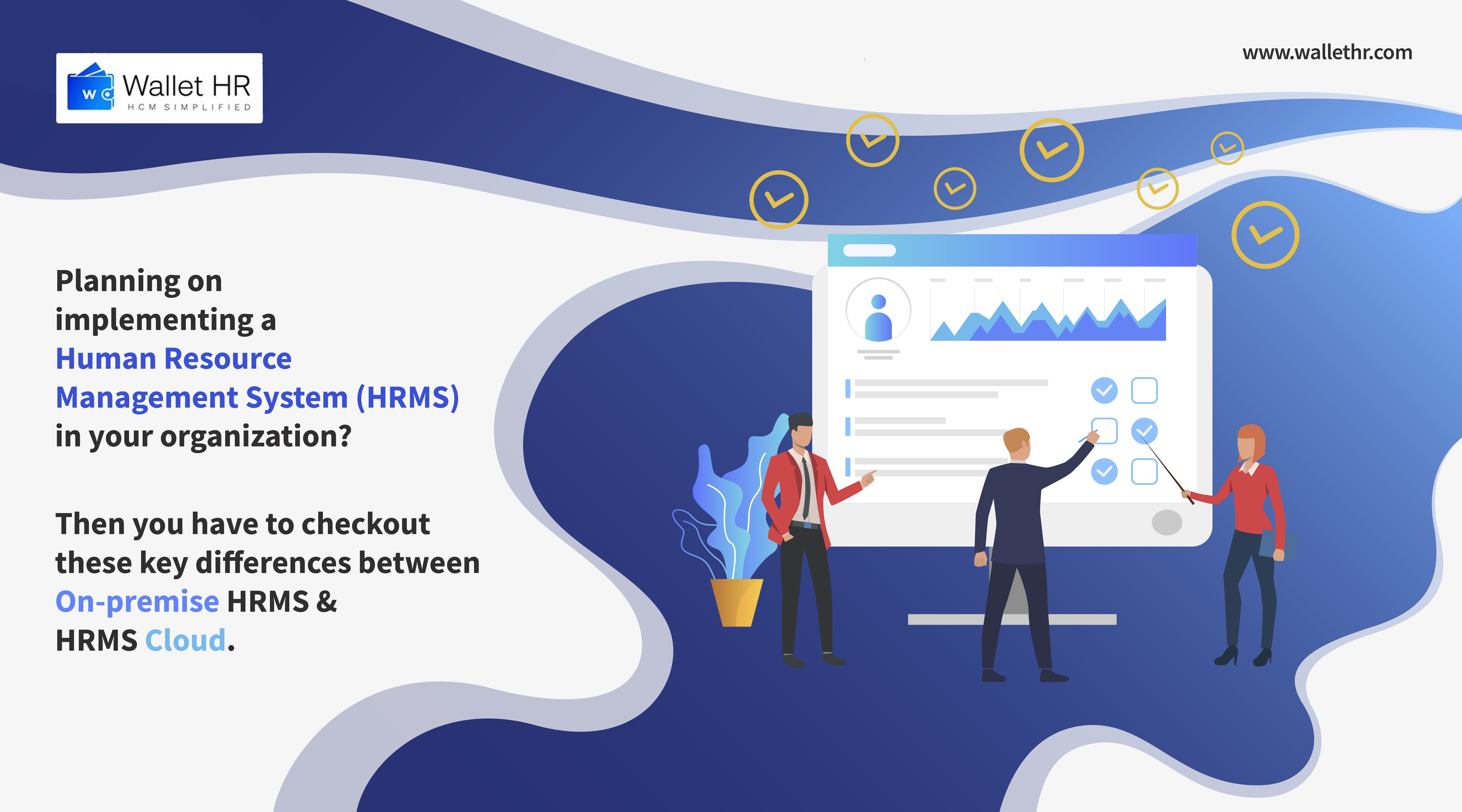On premise vs Cloud: Choosing the right HRMS
Jan 15, 2021

An HRMS empowers an organization to enhance its strategic results and long-term business performance by automating a range of repetitive HR operations.
Ease of access and speed of installation
On-premise HRMS works on in-house installation with necessary hardware and a skilled IT team
But cloud HRM can work on lack of budget or skills for installation.
Business size, flexibility, and capitalization of investment
For businesses with 100+ staff, an on-premise HRMS is more appropriate and provides greater versatility and ease of integration, customization, and personalization.
Its investment, which is really hard to do with a cloud-based HRMS, can be capitalized and its value depreciated.
Ease of use and maintenance
HRMS cloud solutions can be more intuitive and user-friendly also makes integration within existing systems easier.
An on-premise HRMS needs manual upgrades and maintenance by an in-house IT workforce, which can affect the overall productivity of your company.
Data security
An on-premise HRMS gives some reassurance of data protection and an appearance of control because you have complete ownership of data that is safe behind your own firewall.
With cloud based HR software, you can not handle all your sensitive data, so you might be better off storing and securing it.
Cost differences – short-term vs long-term
For on-premise HRMS, you have to bear the cost of installing, configuring, and integrating upfront hardware and software.
Compared to on-premise HRMS costs, subscription fees for cloud HRMS will add up and significantly increase the overall ownership cost over time.